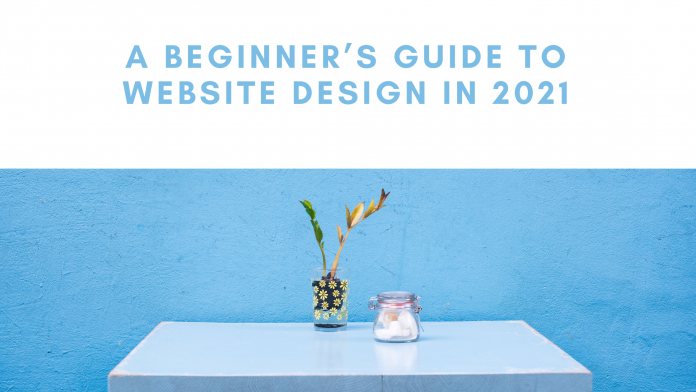It was August 1991 when the first ever website went live. Since then, we have seen a mind-googling evolution in the digital world, and today, there are more than a billion live websites on the internet. Nowadays, every entrepreneur prefers digital platforms to start with and hire experts for professional web design services. It is affordability and accessibility that make the digital world stands out.
If you’re a newbie and want to learn about web design, you’re at the right place, as we will share the information that will help how the design world works. Besides, this blog post will also assist you in creating a website of your own. But, before going ahead, let’s find out what exactly the term ‘web design’ means.
What is Web Design?
Today, you may have come across plenty of websites daily. You may visit some and ignore others. There are multiple reasons behind leaving the site, and one of that reasons is poor web design. From colors and typography to the arrangement of content and placement of imagery, all come under the web design.
If a site seems visually appealing, visitors take an interest in exploring all web pages. But if the web design is clumsy, the user immediately leaves the site. It is why businesses go for professional web design services instead of handling them on their own. There are different types of websites, including e-commerce, portfolio website, company website, blogging site, and more.
Note: Before creating a website, make sure which web design will work best for your business.
Want more insights into web design? Let’s move ahead.
Key Principles of Web Design
All designers can create a web design, but only a few can make good ones. You can also achieve that feat by following the fundamental principles of web design. The principles bring quality to web design and set apart expert and inexperienced web design services. Whether you’re a beginner or expert designer, you need to apply the principles if you want a web design that gives striking looks and feel.
However, there’s no hard-and-fast rule that you have to follow the principles, but you will get better outcomes if you do so. In the designing world, you’re allowed to make changes to set approaches and come up with something new, but you must have deep knowledge of design for this.
Take a quick look at the principles of web design.
-
Balance –
In web designing, you need to create the perfect balance to give users the best visual experience. From content to images, everything should be balanced.
-
Prominence –
On the website, you need some elements to look prominent. Whether it’s a logo or CTAs, use animation, bright colors, or large font to make visitors interact with the element you want them to look at.
-
Consistency –
Some elements like logo, typography, and colors need to be consistently used throughout your web pages. It makes you stand out and boosts brand recognition.
-
Hierarchy –
You might have noticed that some websites placed their brand name at the bottom of the homepage, making the web design poor. You need to place the most important information first so that visitors interact with it easily.
-
White Space –
Leaving some white space is essential to make your web design looks good. All professional web design services and experienced freelance designers use this practice.
Planning Website Layout
The most crucial level in web designing is planning a layout. You need to be very wise and smart while determining the sequence of content and visual elements on all your web pages. It can either make your site’s visual appearance highly appealing or ruin it. There is no one-size-fits-all solution when it comes to web layout.
All you need to do is analyze your business goals, brand’s message or story, and the content you want to include. Meet with experienced designers who offer top-notch web design services and learn from their experience. Besides, get inspiration from the best websites that are appreciated by the world. If you don’t want to make a layout from scratch, you can use ready-to-go templates and customize them as per your needs.
Website Functionality
Another significant thing that matters a lot in web designing is functionality. A good website is speedy, easy to use, and has a user-friendly interface. Certain elements determine the functionality of a website, which includes:
-
Navigation –
Your website must be easy to navigate. A user shouldn’t need any assistance to switch between pages.
-
Speed –
If your site takes too much to get opened, your visitors will leave it immediately.
-
SEO –
It plays the most significant role in brand recognition. No matter how brilliant your website is, you can’t show it to the masses without SEO.
-
User Interface –
It is the user experience that a visitor has after visiting your site. The more exciting the interface is, the more you get conversions.
-
Adaptive/Responsive Design –
Today, half of the overall online traffic comes from mobile devices. Make sure that your website looks as good on mobile as it looks on desktop.
Visual Elements
All credible web design service providers dedicate most of their time to visual elements and functionality during the web designing process. It is visual elements that give your website a look and feel. Every element has a significant role in building a brand, from color schemes to font and images/animation/videos. Therefore, all the visual details on your website should be relevant and perfectly placed. To create the best user experience, you need to put all the necessary visual elements.
Website Maintenance
Last but not least is the consistent maintenance of the website. You need to keep an eye on new features and tools and adapt them if you think your business needs them. Besides, you need to update your website content to keep it relevant frequently. Any old-fashioned or outdated element can make a negative impact on your reputation in the marketplace.





